Filter by
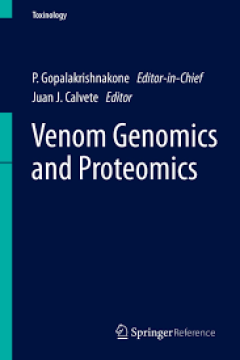
Venom Genomics and Proteomics
This volume provides the reader with recent advances in the fields of molecular toxinology, the biotechnological applications of venom toxins, and antivenom production. The content of the twenty chapters of Venom Genomics and Proteomics illustrates not only the enormous progress made since the implementation of omics technologies in the field of toxinology, but one also realizes the road still …
- Edition
- -
- ISBN/ISSN
- 978-94-007-6416-3
- Collation
- XXI, 454
- Series Title
- -
- Call Number
- -
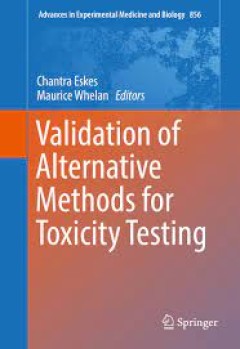
Validation of Alternative Methods for Toxicity Testing
This book provides information on best practices and new thinking regarding the validation of alternative methods for toxicity testing. It covers the validation of experimental and computational methods and integrated approaches to testing and assessment. Validation strategies are discussed for methods employing the latest technologies such as tissue-on-a-chip systems, stem cells and transcript…
- Edition
- -
- ISBN/ISSN
- 978-3-319-33826-2
- Collation
- XX, 407
- Series Title
- -
- Call Number
- -

Agarwood: Science Behind the Fragrance
This book gives readers new information to understand the mechanism of agarwood induction and therefore eradicate the myths surrounding agarwood formation. One of the challenges in conserving agarwood resources is species identification. In this book, taxonomy and systematics of agarwood-producing trees from historical and recent perspectives is discussed, and tips are given for identifying cul…
- Edition
- Ed. 1
- ISBN/ISSN
- 978-981-10-0833-7
- Collation
- X, 167
- Series Title
- Tropical Forestry
- Call Number
- 615.4 AGA a
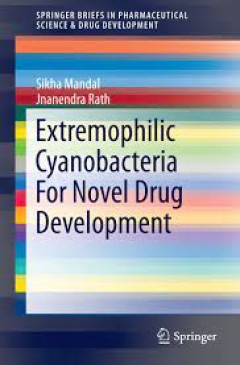
Extremophilic Cyanobacteria For Novel Drug Development
This volume presents recent developments in the novel drug development and potential of extremophilic cyanobacteria. It discusses how these tiny organism originated, produce oxygen that leads to evolution of life on the earth, how their survival strategies in extreme climatic conditions lead to diverse metabolic pathways, and the opportunity to use them to develop novel drugs. The book is compr…
- Edition
- -
- ISBN/ISSN
- 978-3-319-12009-6
- Collation
- 1 b/w illustrations
- Series Title
- -
- Call Number
- -

Excipient Applications in Formulation Design and Drug Delivery
In recent years, emerging trends in the design and development of drug products have indicated ever greater need for integrated characterization of excipients and in-depth understanding of their roles in drug delivery applications. This book presents a concise summary of relevant scientific and mechanistic information that can aid the use of excipients in formulation design and drug delivery ap…
- Edition
- -
- ISBN/ISSN
- 978-3-319-37107-8
- Collation
- 86 b/w illustrations, 75 illustrations in colour
- Series Title
- -
- Call Number
- -
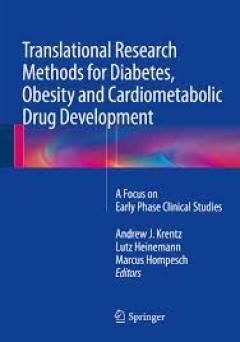
Translational Research Methods for Diabetes, Obesity and Cardiometabolic Drug…
The world is beset by a pandemic of obesity and type 2 diabetes and the need for new drugs is startlingly clear; recent years have seen a huge increase in research activity to fill this gap. The development of new drugs for diabetes and obesity must be founded upon a sound appreciation of the pathophysiology of these common disorders. The dual defects of insulin resistance and impaired insulin …
- Edition
- 1
- ISBN/ISSN
- 978-1-4471-7032-7
- Collation
- XII, 312
- Series Title
- -
- Call Number
- -
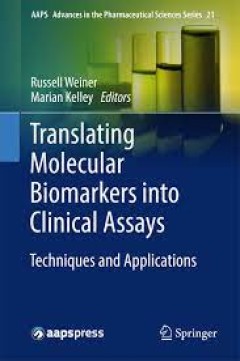
Translating Molecular Biomarkers into Clinical Assays
This handbook covers established and advanced techniques for biomarker analysis, such as guidelines and strategies for assay validation methods; different mathematical models that are necessary in contemporary drug discovery and development; and evaluation of new cytometry methods. Expertly curated by two practicing professionals in drug development and biotherapeutics, individual chapters are …
- Edition
- 1
- ISBN/ISSN
- 978-3-319-40793-7
- Collation
- XIII, 212
- Series Title
- AAPS Advances in the Pharmaceutical Sciences Series
- Call Number
- -
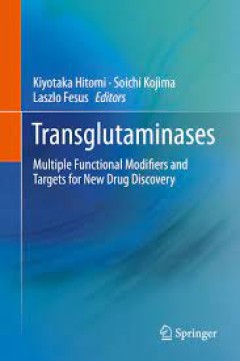
Transglutaminases
This book presents basic and extensive information on the physiological and pathological significance of the protein-modifying enzymes, transglutaminases, which are involved in multiple biological events by catalyzing a unique and important posttranslational modification reaction, cross-linking of proteins, and interacting with a large number of proteins inside and outside of cells. Although se…
- Edition
- 1
- ISBN/ISSN
- 978-4-431-55823-1
- Collation
- VIII, 391
- Series Title
- -
- Call Number
- -
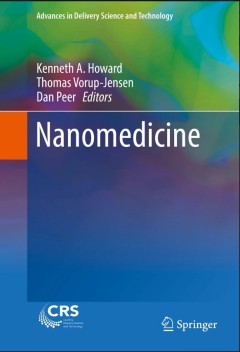
Nanomedicine
This title is a comprehensive text that addresses key aspects of nanomedicine such as properties occurring at the nanoscale that have unique medical effects, great molecular knowledge of the human body and disease processes, and apparent clinical translation as opposed to narrow insufficient texts that address only a few topics and attempt to “rebrand” established drug delivery. It will cle…
- Edition
- 1
- ISBN/ISSN
- 2192-6204
- Collation
- XVIII, 378
- Series Title
- Advances in Delivery Science and Technology
- Call Number
- -
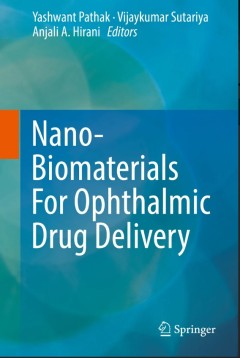
Nano-Biomaterials For Ophthalmic Drug Delivery
This consolidated reference book addresses the various aspects of nano biomaterials used in ophthalmic drug delivery, including their characterization, interactions with ophthalmic system and applications in treatments of the ophthalmic diseases and disorders. In the last decade, a significant growth in polymer sciences, nanotechnology and biotechnology has resulted in the development of new na…
- Edition
- 1
- ISBN/ISSN
- 978-3-319-80548-1
- Collation
- XIX, 627
- Series Title
- -
- Call Number
- -
 Computer Science, Information & General Works
Computer Science, Information & General Works  Philosophy & Psychology
Philosophy & Psychology  Religion
Religion  Social Sciences
Social Sciences  Language
Language  Pure Science
Pure Science  Applied Sciences
Applied Sciences  Art & Recreation
Art & Recreation  Literature
Literature  History & Geography
History & Geography